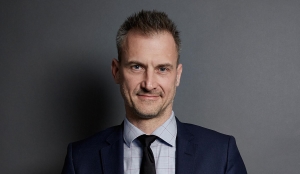New EU directive ensures earmarked parental leave to men
The European Parliament and the European Council have approved the final wording for a new directive that i.a. ensures earmarked parental leave for men.
On 13 June 2019, the majority of the European Parliament voted for the enactment of a new directive. The purpose of the new directive is to remedy female employees' underrepresentation in the European labour market and to support both men and women's career path by giving them better opportunities to combine work-related and private obligations. Furthermore, the aim of the directive is to ensure equal treatment and equal rights between men and women.
Changes compared to the current EU legislation
With the enactment of the new directive, a majority in the EU wishes to achieve a better balance between the different obligations in the private lives of both male and female employees within the EU. In this way, woman will not necessarily be the primary caretaker in the family, but also men must be given a bigger incentive to participate in this obligation.
The current EU legislation only provide limited incentives for fathers to take parental leave, as the fathers are not, pursuant to EU legislation or Danish legislation, entitled to payment during paternity or parental leave. The lack of right to payment during parental leave usually have the result that the mother stays at home, as she (in several countries within the EU) is not the primary provider for the family.
With the enactment of this new directive, the EU primarily aims at ensuring 10 days fully paid paternity leave to be spent in connection with the birth of the child. The payment level during the paternity leave must correspond to the amount of benefit the employee would receive, if he has been on leave due to sickness. For salaried employees in Denmark, this means that salaried employees are entitled to full salary during the paternity leave. This is a significant change from the current legislation according to which the fathers are only entitled to parental pay during the parental leave.
The directive also ensures that all employees have an individual right to 4 months parental leave, whereas 2 of the 4 months cannot be transferred to the other parent. In other words, the directive earmarks 2 months of the parental leave to the mother and to the father, respectively. With this change, EU tries to establish an incentive for especially the fathers to spend minimum 2 months parental leave, as this period cannot be transferred to the mother and therefore will be lost, if the 2 months is not spend by the father. However, it should be noted that the respective member states can determine that the parental leave is conditioned by a qualifying period, which cannot exceed one year. The benefit during this period is determined by each member state, but must as a minimum contribute to establish an incentive for both parents to spend their respective earmarked parental leave. In Denmark, it is presumed that the current regulation according to which an employee is entitled to parental pay is maintained.
Further, the directive ensures the employees an entitlement to request flexible working agreements to combine work and private life. The employees are also entitled to care leave on up to 5 working days, which are intended for critical sickness in the immediate family.
Bird & Bird comments:
Bird & Bird notices that the current Danish legislation on this area already entails most of the obligations the directive wishes to regulate. The primary changes compared to the Danish legislation will be that male Salaried Employees will be entitled to full salary during paternity leave and that 2 months of the fathers and mothers parental leave will be earmarked to the respective parent and is therefore locked to this parent.
In addition, it is noted that the directive must be implemented through Danish legislation within 3 years after the commencement of the directive. The directive will enter into force when published in the Official Journal of the European Union. Bird & Bird will follow the implementation of the directive.




